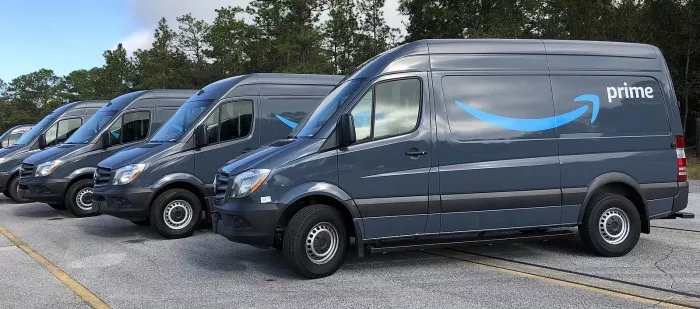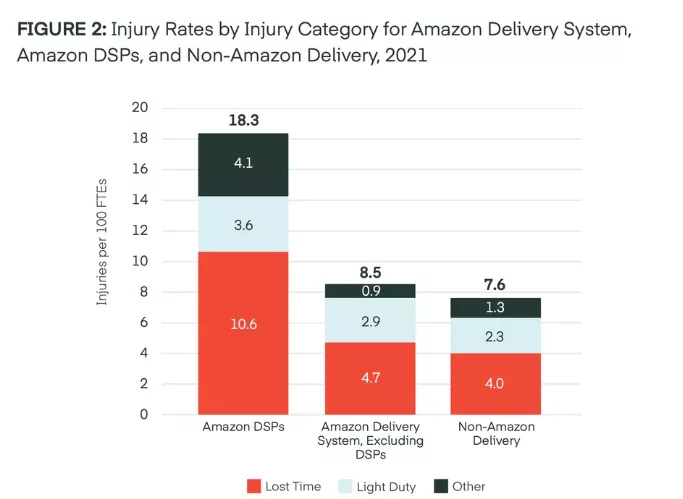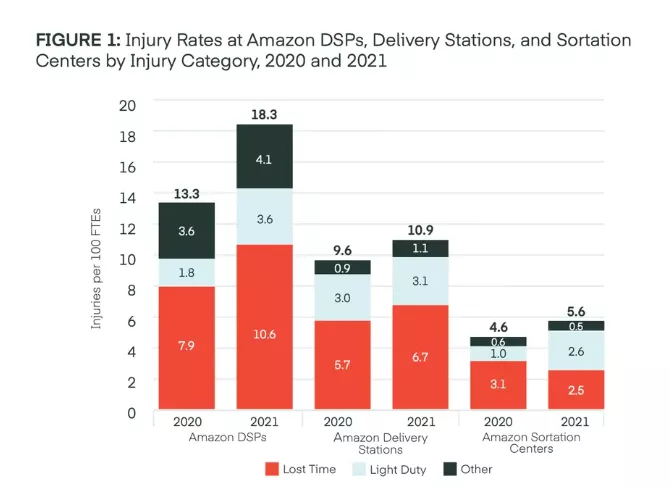According to the verge, according to a [report] of the advocacy group of the strategic organization center (SOC)( https://thesoc.org/wp-content/uploads/2022/05/The-Worst-Mile.pdf ) , some workers who deliver packages for Amazon are more than twice as likely to be injured at work as non Amazon delivery workers** The union compiled data submitted by Amazon and its contractors to the occupational safety and Health Administration (OSHA) and found that an estimated 18.3% of Amazon package delivery workers were seriously injured to report.

As the report points out, Amazon's delivery work is not entirely completed by workers directly employed by the company. SOC said that a large part of the packages were delivered by people working for delivery service partners (DSP), or companies contracted with Amazon to deliver in a certain region. Amazon also has workers directly contracted through its flex system (temporary workers sign up here to deliver parcels), and direct employees work in its distribution stations and sorting centers.

The figure shows the injury rate of DSP and other departments of Amazon delivery system and non Amazon delivery industry.
According to the report, the injury rate of workers working for DSP is significantly higher than that of Amazon's own workers, and the injury rate of Amazon's own workers is also higher than that of non Amazon's delivery workers. SOC said that in 2021, 10.6 of every 100 DSP workers were seriously injured and had to take leave. Among every 100 DSP workers, 3.6 have injuries that require them to be assigned to light work. The report cites data from a Colorado workers' compensation insurance company. These injuries may be caused by tripping, falling, dog bite, strain caused by repeated twisting and car accident.
In the same year, the injury rate of Amazon delivery system workers outside the DSP plan decreased significantly. 4.7 of every 100 workers take leave and 2.9 of every 100 workers reduce their work. The "other" injury rate of non DSP workers is also 0.9 -- the injury rate of DSP workers is 4.1. The rate of delivery workers who do not belong to Amazon is lower. Four out of every 100 people lost time, 2.3 had to do light work, and 1.3 injuries were classified as "other".
The report is based on the OSHA report submitted by Amazon and "about 10%" Amazon US DSP. Amazon did not respond to the verge's request for comment on the report.
SOC claimed that one of the main reasons for the high injury rate of DSP workers is that they are required to work at an extremely fast speed. Citing complaints from DSP drivers and lawsuits from DSP itself, the report said Amazon wanted them to deliver a package every one to two minutes for 10 hours at the busiest time of the year. The workers also told the SOC that they were afraid of being fired if they missed unrealistic quotas. It is reported that Amazon also does not provide convenience for local conditions, such as narrow streets, difficult to drive its trucks through or difficult terrain.
There have been similar stories about the unrealistic goals set by the company for its warehouse workers.
Although DSP drivers are not direct employees of Amazon, the company should at least take some responsibility for the actions of other companies they choose. This is especially true in the case of Amazon - the retailer has shown that it is willing to regulate drivers' health and social media posts and monitor them through AI driven cameras and wrong, frustrating applications. It also sets quotas that DSP must meet.

The report said that since 2020, with the vigorous development of the company's business, the injury rate of Amazon's delivery workers has also increased.
Amazon's leadership has solved the injury problem before. In a letter to shareholders in 2021, Andy Jassy, the company's CEO, said that the company's recordable accident rate was "a little lower than the average of our express and delivery peers". The SOC countered this claim in its report, calling it "seriously misleading". The union said that Amazon used the old data of 2020, when the injury rate was significantly low. (it is reported that the injury rate of Amazon warehouse also decreased in 2020, and then increased again in 2021).
Amazon's "slightly lower than average" data doesn't support the claim that its "slightly lower than average" data for the business. This is not necessarily surprising given that Amazon does not consider them employees. (however, DSP drivers wear Amazon uniforms, drive trucks with the company's logo, and even provide driving instructions from Amazon's devices.)